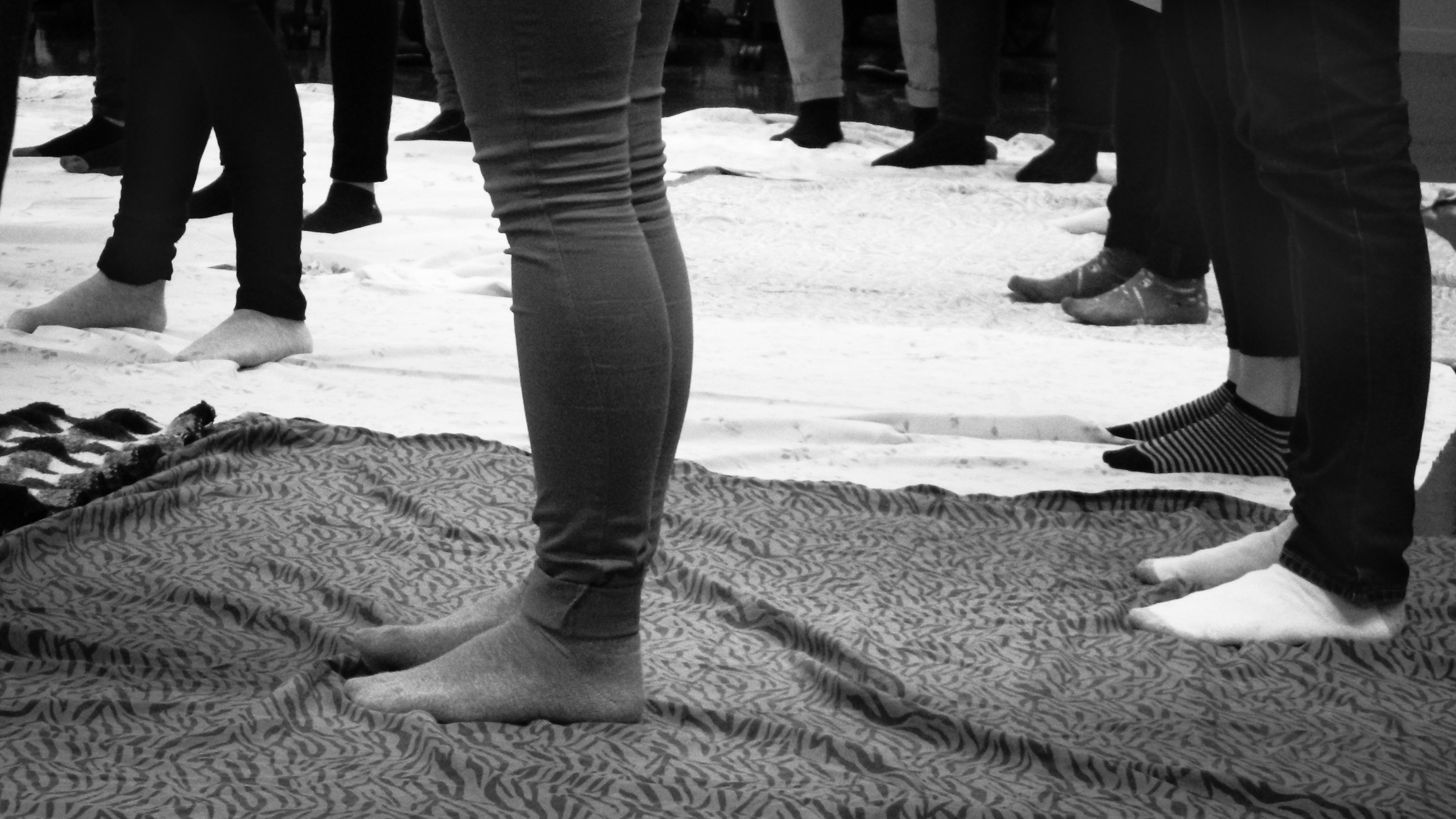
Sanasi Jayawardena, Class of 2T0
 Last week, I had the amazing experience of completing the blanket exercise with my classmates in Mississauga. The exercise is an interactive learning experience that teaches Indigenous history. While standing on blankets representing the lands that Indigenous peoples have lived on since time immemorial, we learned about 500 years’ worth of history from an Indigenous perspective.
Last week, I had the amazing experience of completing the blanket exercise with my classmates in Mississauga. The exercise is an interactive learning experience that teaches Indigenous history. While standing on blankets representing the lands that Indigenous peoples have lived on since time immemorial, we learned about 500 years’ worth of history from an Indigenous perspective.
Over the first hour, we saw how European colonizers, unfamiliar diseases and colonialist policies decimated the Indigenous population and then tucked Indigenous peoples into tiny, largely unprofitable land tracts called reserves. For me, this exercise was hugely emotional and intellectually challenging.
Before medical school, I lived and worked in Saskatchewan and Manitoba, in and out of Indigenous communities. There never was a moment when I didn’t see their presence physically, spiritually and politically.
But when I was growing up in Kitchener-Waterloo, I didn’t have much interaction with Indigenous people or exposure to their perspectives beyond fundraising in my church for the youth in Attawapiskat and history lessons about Indigenous and settler clashes.
The blanket exercise hammered home how oblivious I have been to Indigenous people and allowed me and my classmates to begin preparing to serve them as future healthcare providers.
It was especially striking to see how much harm Indigenous people have felt through a loss of connection with their land. As an immigrant, my relationship with the place I call home is complicated — this isn’t where my ancestors are from, but I don’t feel I fully belong where they lived, either. It can be difficult for me to contemplate a connection to land so deep, far beyond what I can imagine. The blanket exercise allowed us to experience a tiny, tiny bit of the emotional devastation felt by Indigenous people who were torn from the land their ancestors have called home for forever.
As a Canadian and a future physician, I think this exercise will help me grow in ways that will allow me to better serve Indigenous people in my medical practice. One of the things that makes the Foundations Curriculum so striking is how it acknowledges how much our health is impacted by factors outside of the control of physicians. History, intergenerational trauma and ongoing struggles and sacrifices will have had long-lasting impacts on many of my Indigenous patients. It’s important that, as a medical student, I acknowledge that. As a physician, I will have opportunities to advocate with these same people and communities for better.
My classmates and I completed our blanket exercise, but perhaps what I should have said is that we began to deepen our understanding. I hope that the thoughts and reflections inspired by the experience lead to an ongoing search for reconciliation.

